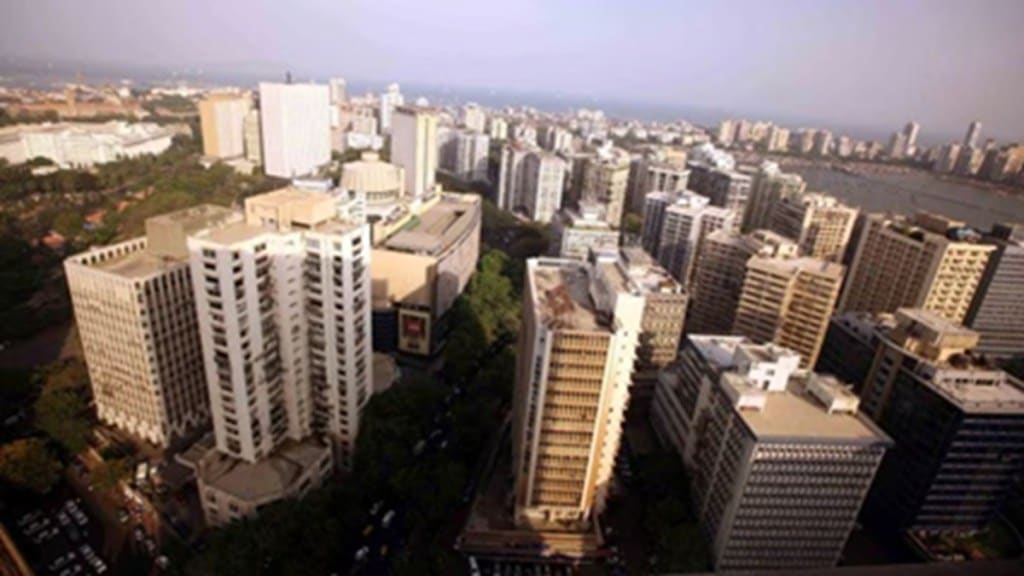The Navi Mumbai International Airport has set off a rush for land and housing in adjoining areas, sending real estate prices sky-high well before the first commercial take-off. Prime Minister Narendra Modi inaugurated the first phase of the airport on Wednesday, and commercial operations are set to begin in December.
Current surge in property value
Land rates in Ulwe, Panvel, Taloja and Kharghar have shot up by 50-60% in the last three years, while residential prices have gone up by 20-40%, according to Anarock Research. Ulwe, where the airport is located, witnessed the highest increase of 40% in residential prices while Kharghar saw 20% growth during the period.
“There remains a scope for an additional 30-40% growth (in land prices) over the next two years,” said Anuj Puri, chairman at Anarock Property Consultants.
However, Puri said that since most corporates have already acquired land in the vicinity of Navi Mumbai airport, any further increase in land prices is likely to create an upward pressure on overall property prices within the airport catchment.
Deepak Khandelwal, principal partner & chief sales officer, Square Yards, pegged the price rise even higher.
He said housing prices in the Panvel area have risen by nearly 74% between FY21 and FY25 to Rs 10,000-12,000 per square feet, compared with 45% growth in the rest of Navi Mumbai, though the latter commands a higher property price of Rs 19,000-21,000 per square feet. Plot rates in Panvel on an average touched Rs 80,000- 85,000 per square yard, reflecting a steep 93% increase, compared with 58% growth in other parts of Navi Mumbai, where the prices are higher at Rs 1,10,000- 1,30,000.
As the airport, billed to be the country’s largest when fully operational, got closer to inauguration, property developers launched a plethora of projects. About 45 million square feet of residential spaces were launched across Navi Mumbai in the last three years with around 67% of this supply contributed by just the four key micro-markets, Anarock said. Mumbai has seen launches of 282 million sq ft during the period.
Launches seem to be clearly following the demand. “Many large developers are also launching their residential projects here which makes Kharghar, Panvel, Ulwe and Taloja prominent residential hubs as well,” Puri of Anarock said .
Ram Naik, co-founder & CEO, The Guardians Real Estate Advisory, expects a multifold rise in property demand in key micro-markets such as Ulwe — areas that were earlier viewed as “potential zones” will now transition into “high-demand corridors”.
With improved connectivity via the Mumbai Trans Harbour Link, upcoming Metro lines, and the Sion-Panvel highway expansion, the entire belt will benefit from faster access to both south Mumbai and Thane, Naik said.
From an investment perspective, Navi Mumbai is entering its “golden phase”, he said, adding that capital appreciation in select pockets could rise by 20-30% over the next few years. “Developers with quality projects and timely execution capabilities stand to gain the most, while buyers will find greater long-term value compared to the saturated markets of Mumbai city,” he said.
Anshuman Magazine, chairman & CEO – India, South-East Asia, Middle East & Africa, CBRE, said the airport will have a “transformative impact” on the city’s real estate, especially in the surrounding areas of the airport. “While the needs of airport personnel, working professionals and aviation staff are likely to drive the residential demand around the airport, commercial demand is likely to be fuelled by development of logistics parks, offices and hotels,” he said.
Property developers are equally upbeat about price appreciation.
Aerocity, logistics, and corporate hub
“We believe prices will go up by 20-25% in immediate future before they stabilise. In places where prices have not gone up, will increase now,” said Vijay Wadhwa, chairman emeritus at Wadhwa Group. Wadhwa believes that places such as Kharghar have become expensive now.
Recently, the Navi Mumbai International Airport (NMIAL), operated by Adani Airport Holdings, leased 405 ready-to-move-in flats on rent from the Wadhwa Group in its township project, Wadhwa Wise City, in Panvel.
“There is a good demand for residential complexes with good amenities. We feel a lot of demand will come from people who work in the airport and allied businesses,” Wadhwa said.
The development outlook for Panvel, Kharghar, and Ulwe is deeply tied to the unfolding vision of NAINA Mumbai 3.0, which is reshaping the region into a structured urban extension of Mumbai, said Mehernosh Tata, MD & CEO, Godrej Housing Finance.
Vimal Nadar, national director & head of research, Colliers India, said Navi Mumbai’s strategic positioning as a sub-dollar office market, coupled with enhanced connectivity and global access offered by the airport, are expected to drive heightened office leasing activity in the area over the next few years.
Also, Nadar said, the proposed 667-acre Navi Mumbai Aerocity next to the airport will foster a new urban ecosystem that blends work and lifestyle.

